
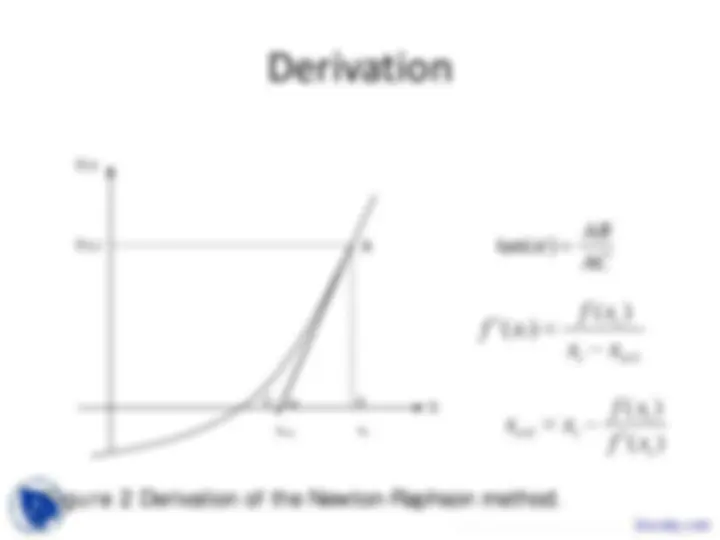
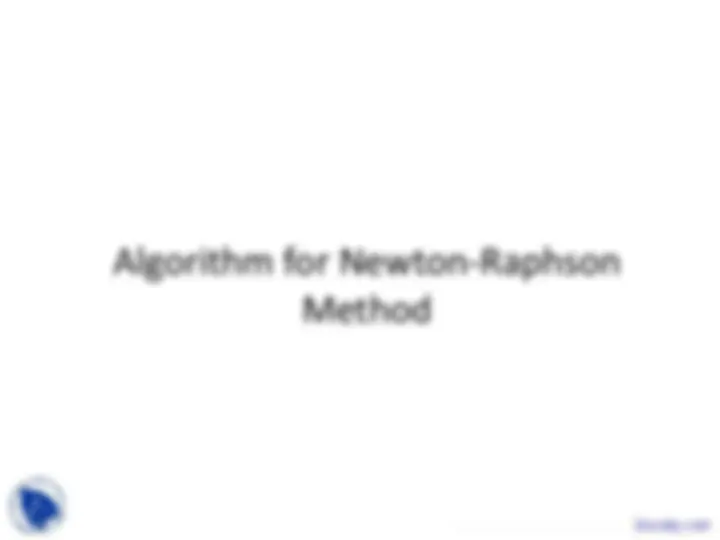
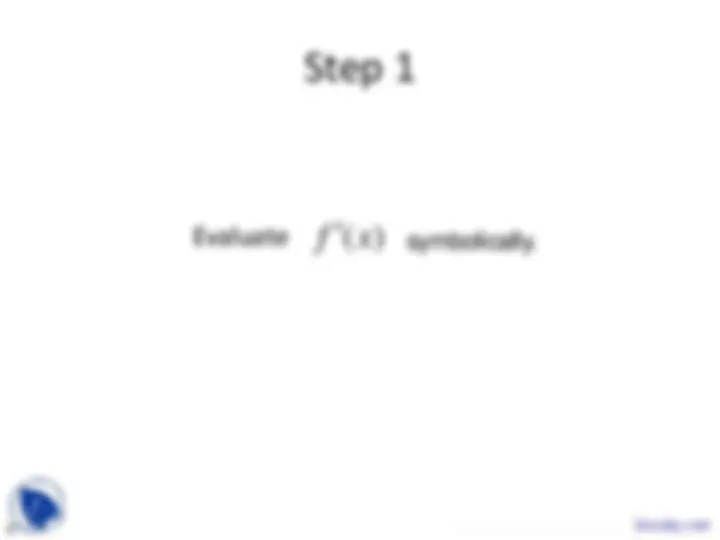
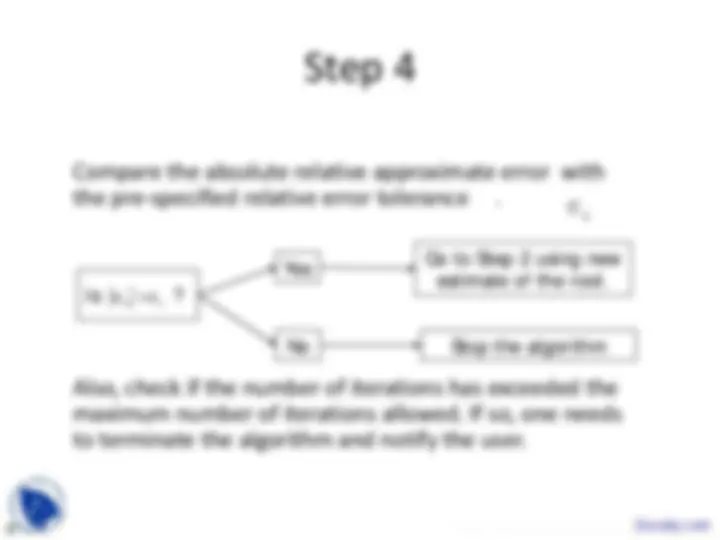
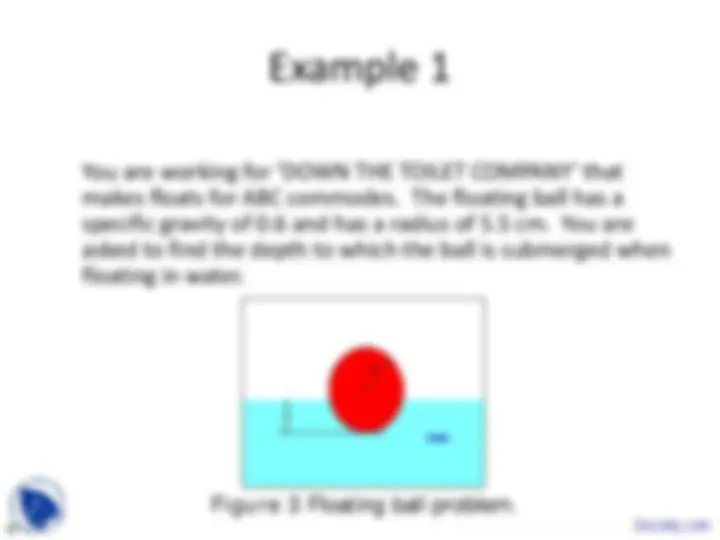
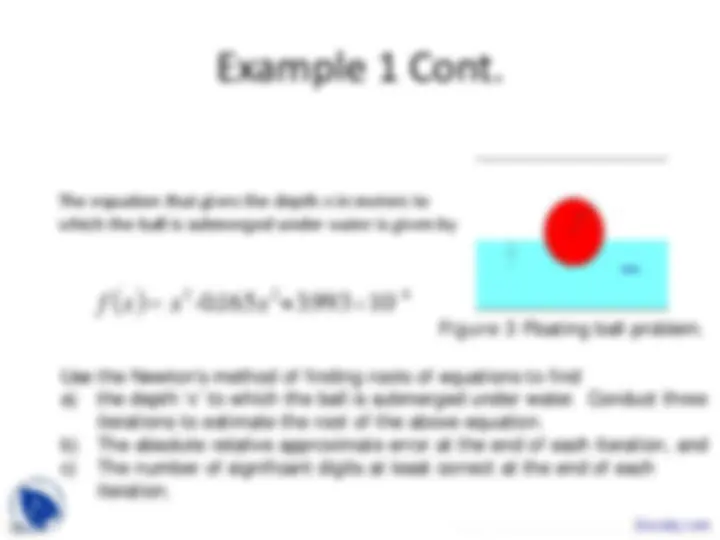
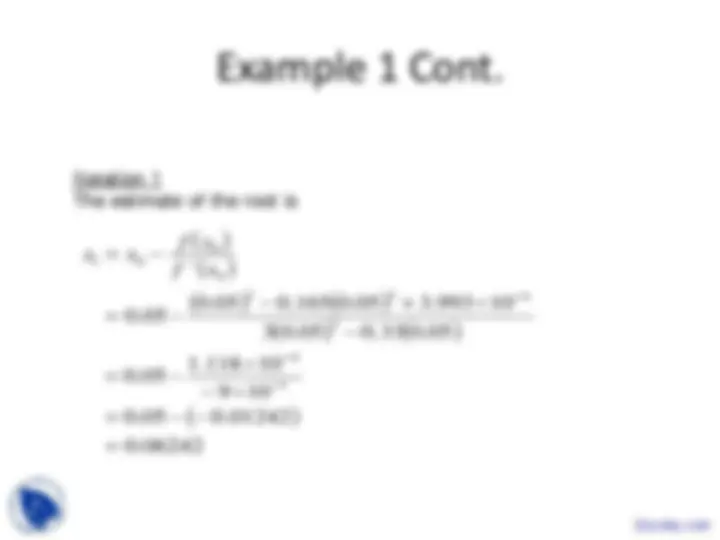
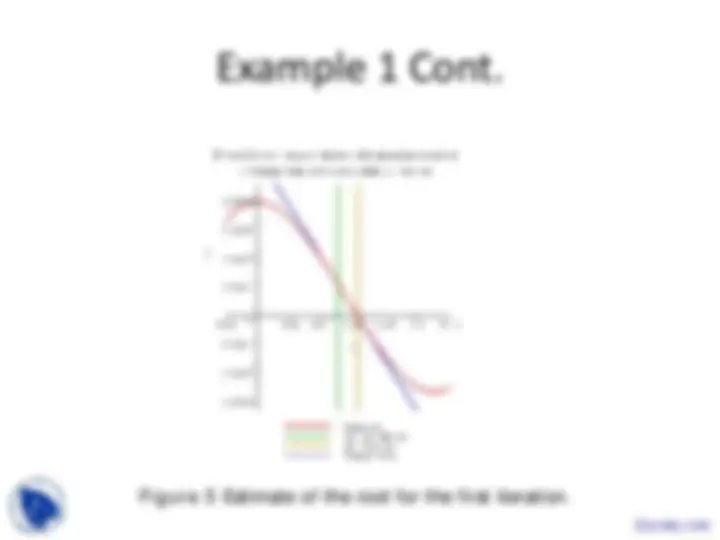

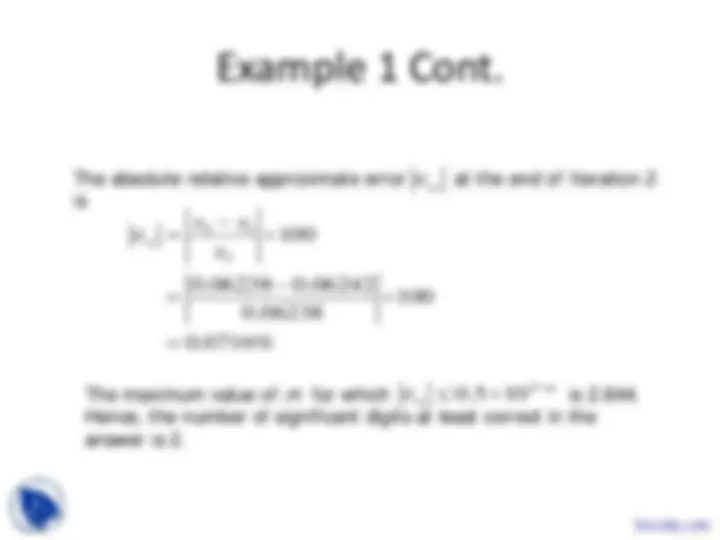
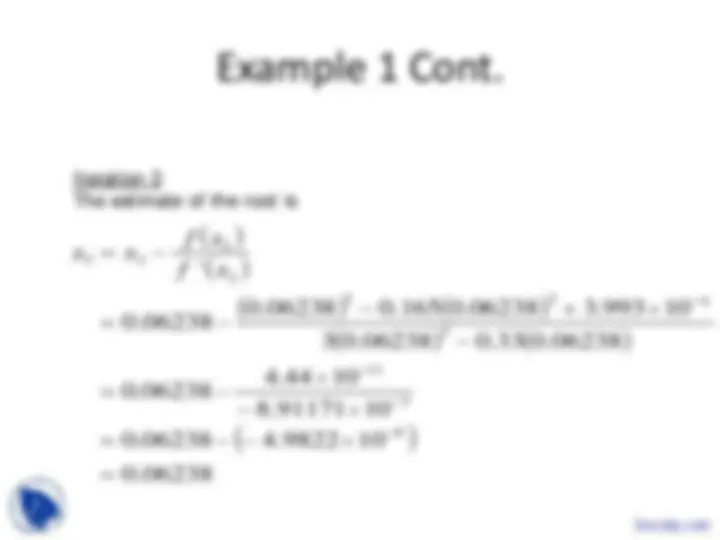
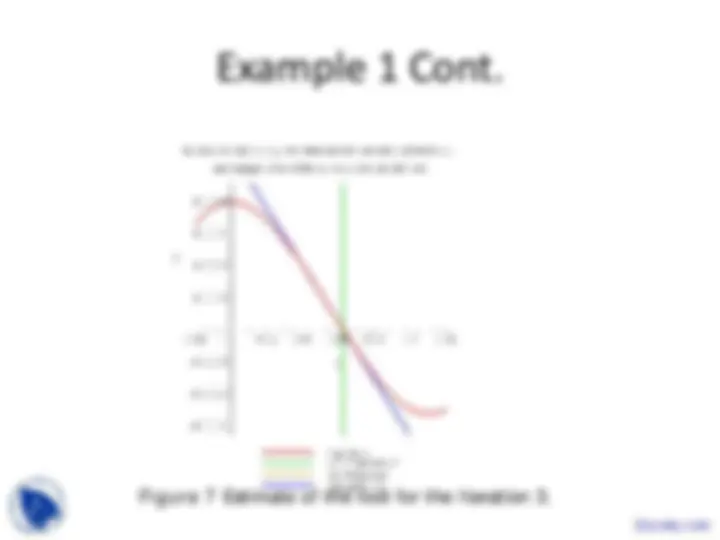
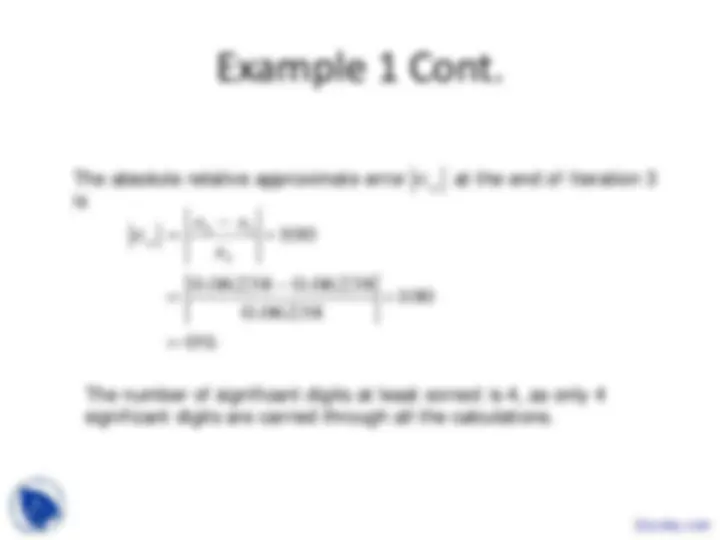
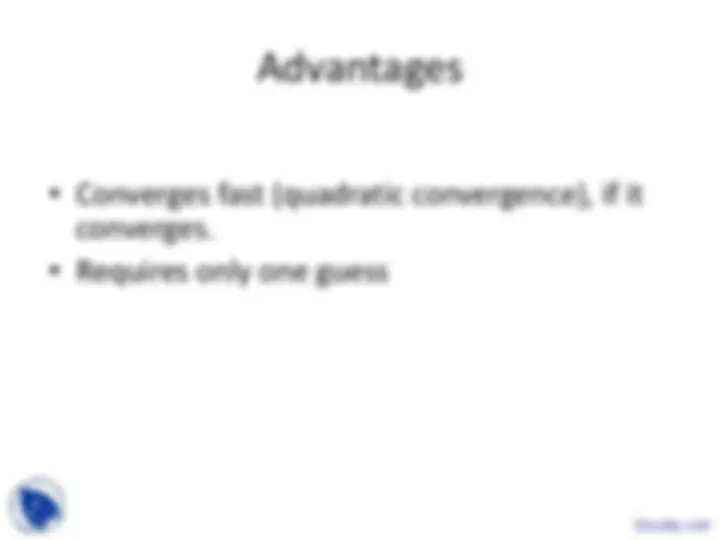
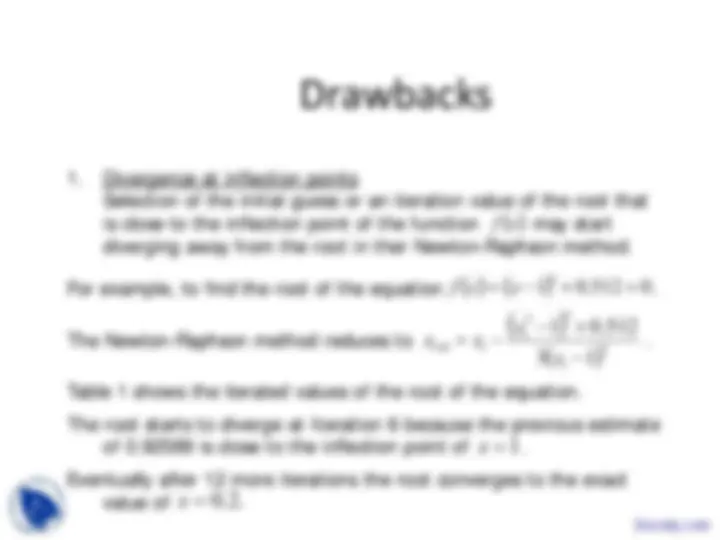
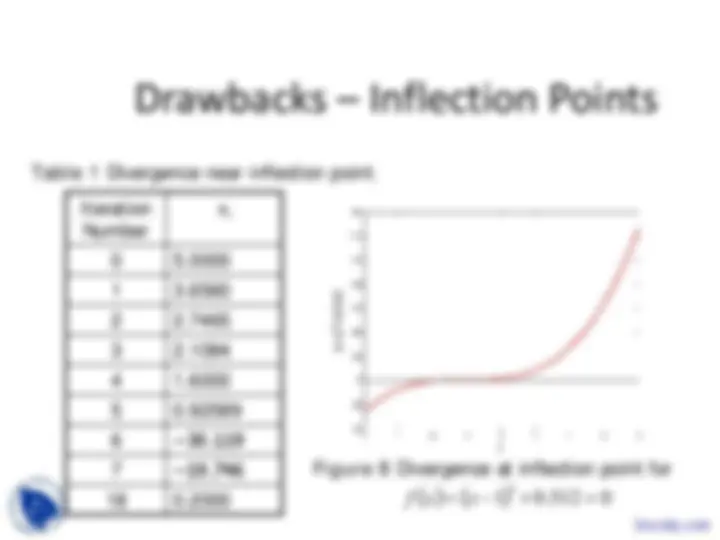
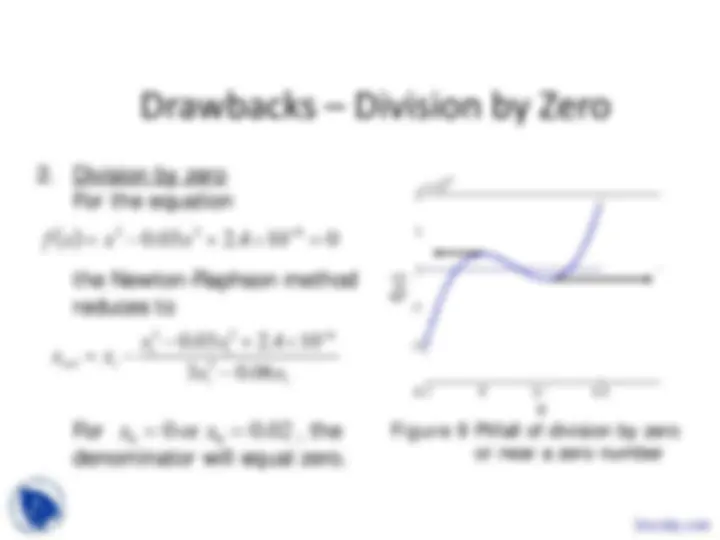
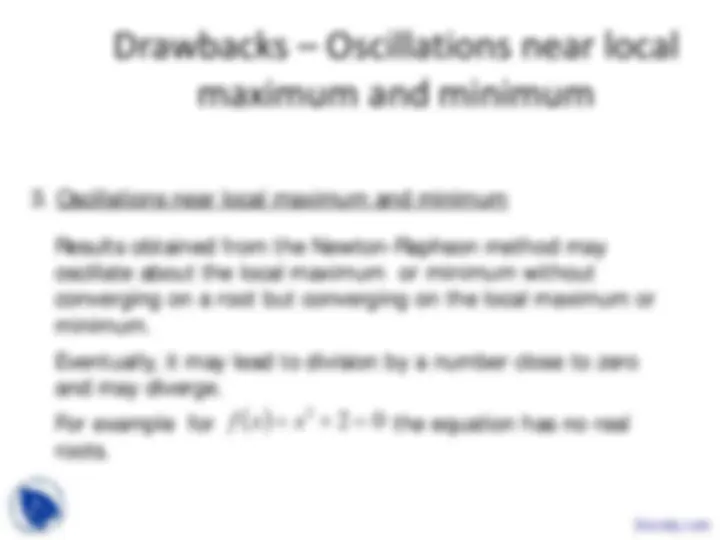
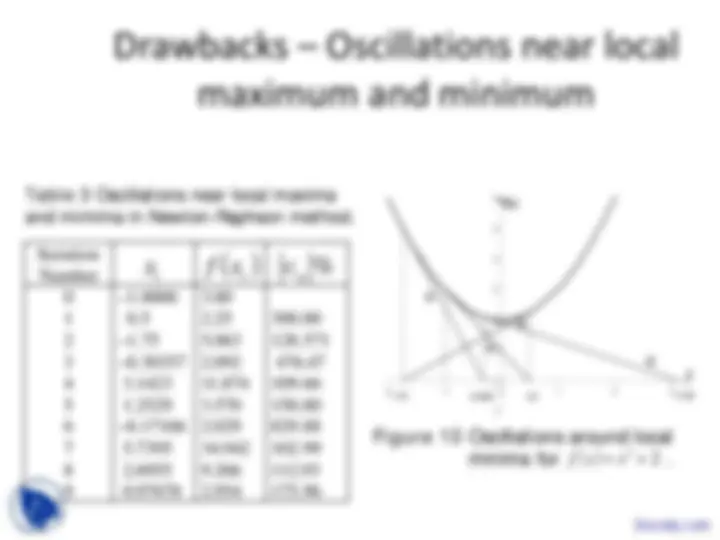
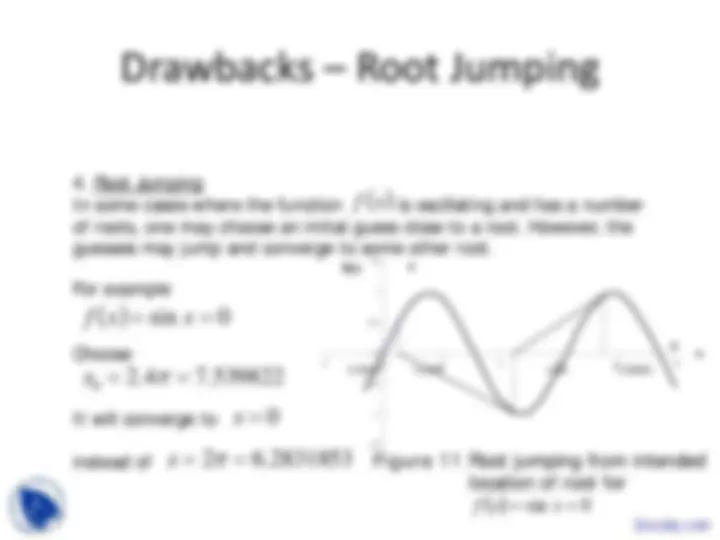


Study with the several resources on Docsity

Earn points by helping other students or get them with a premium plan


Prepare for your exams
Study with the several resources on Docsity

Earn points to download
Earn points by helping other students or get them with a premium plan
Community
Ask the community for help and clear up your study doubts
Discover the best universities in your country according to Docsity users
Free resources
Download our free guides on studying techniques, anxiety management strategies, and thesis advice from Docsity tutors
Main points are: Newton’s Method, One-Dimensional Optimization, Open Search Method, Golden Section Search Method, Newton-Raphson Method, Minima of Function, Cross-Sectional Area, Summary of Iterations, Actual Solution
Typology: Slides
1 / 28

This page cannot be seen from the preview
Don't miss anything!





















Docsity.com
i
i i i
f(x)
f(xi)
f(xi- 1 )
xi+2 xi+1 xi X
θ
2 http://numericalmethods.eng.usf.eduDocsity.com
Algorithm for Newton-Raphson
Method
http://numericalmethods.eng.usf.eduDocsity.com
5 http://numericalmethods.eng.usf.eduDocsity.com
1
1
i
i i a
7 http://numericalmethods.eng.usf.eduDocsity.com
Compare the absolute relative approximate error with
the pre-specified relative error tolerance.
Also, check if the number of iterations has exceeded the
maximum number of iterations allowed. If so, one needs
to terminate the algorithm and notify the user.
s
Is?
Yes
No
Go to Step 2 using new
estimate of the root.
Stop the algorithm
∈ a >∈ s
8 http://numericalmethods.eng.usf.eduDocsity.com
The equation that gives the depth x in meters to
which the ball is submerged under water is given by
3 2 4
-
Use the Newton’s method of finding roots of equations to find
a) the depth ‘x’ to which the ball is submerged under water. Conduct three
iterations to estimate the root of the above equation.
b) The absolute relative approximate error at the end of each iteration, and
c) The number of significant digits at least correct at the end of each
iteration.
10 http://numericalmethods.eng.usf.edu
Figure 3 Floating ball problem.
Docsity.com
This image cannot currently be displayed.
3 2 4
-
To aid in the understanding
of how this method works to
find the root of an equation,
the graph of f(x) is shown to
the right,
where
Solution
Figure 4 Graph of the function f(x)
Docsity.com
( )
( )
( ) ( )
( ) ( )
( )
3
4
2
(^324)
0
0 1 0
−
−
−
f x
f x x x
Iteration 1
The estimate of the root is
Docsity.com
Figure 5 Estimate of the root for the first iteration.
Docsity.com
5
3
7
2
(^324)
1
1 2 1
−
−
−
−
Iteration 2
The estimate of the root is
Docsity.com
Figure 6 Estimate of the root for the Iteration 2.
Docsity.com
9
3
11
2
(^324)
2
2 3 2
−
−
−
−
Iteration 3
The estimate of the root is
Docsity.com
Figure 7 Estimate of the root for the Iteration 3.
Docsity.com